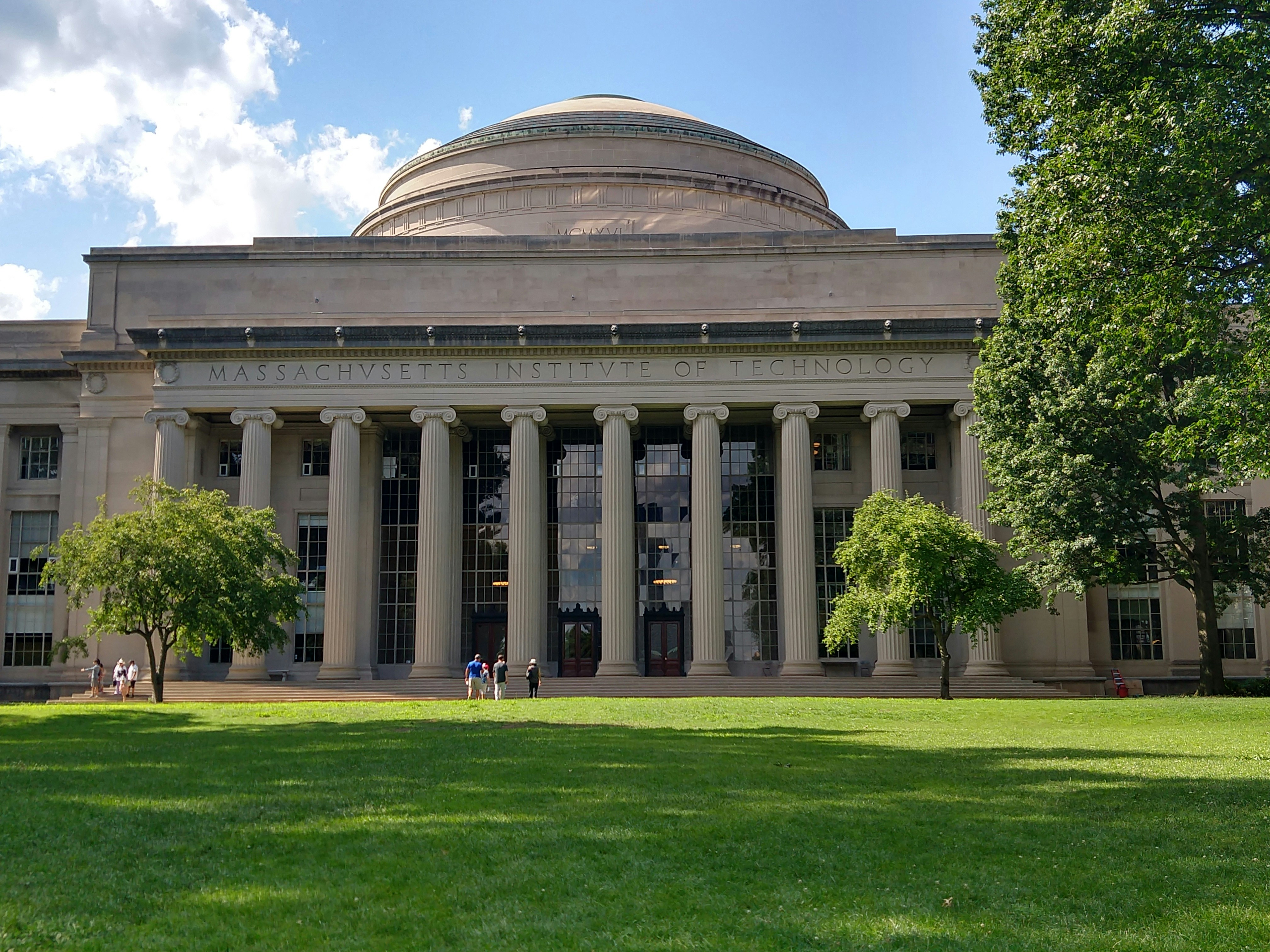Caltech and MIT represent the California Institute of Technology and the Massachusetts Institute of Technology. Both of the two institutes are extremely prestigious in the US, especially for students who have a strong passion for science, technology, engineering, and mathematics (STEM) subjects. However, making a choice between the two universities requires more comprehensive information. This article will walk through important factors that students care to compare so they can make a well-informed decision.
Overview
Both Caltech and MIT are world-class private research universities in the US. They have a strong focus on STEM subjects academically and are ranked among the top universities in the world ranking lists.
California Institute of Technology (Caltech) is founded in 1891 in Pasadena, California. The institution is located in a small town andinvolves a relatively small size of students—around 1000 undergraduate students and 1440 graduate students. But Caltech operates many remarkable facilities (laboratories) and has cultivated 48 Nobel laureates.
Massachusetts Institute of Technology (MIT) is incorporated in 1861 in Cambridge, Massachusetts. MIT provides a larger campus and more faculty that allows for a greater size of students—more than 4000 undergraduate students and over 7000 graduate students. And MIT has been honored with 105 Nobel Laureates.
Location
Caltech and MIT are located on opposite ends of the country. Both of them are in small university towns while close to a major city and have nice locations. But the two locations are very different.
Pasadena is home to Caltech, although it’s not a well-known city in California. The more famous downtown Los Angeles is 18 km away; it’s about a 25-minute drive. Living in Southern California, students will enjoy warm weather and sunshine all year.
Cambridge, where MIT is based, is more well-known than Pasadena and has easy access to Boston. Harvard University is also here, with many other tourist attractions like the River Cam. Different from sunny LA, Cambridge has four distinct seasons. Students will experience hot summers but cold winters as well.
Academic strength
Both MIT and Caltech are top-tier educational institutions for science and engineering in the world. They have similar 3:1 student-faculty ratios, which implies only 3 students per professor at school. While there are differences in academic program settings.
Caltech has 6 academic divisions (Biology, Chemistry, Engineering, Geological, Humanities, and Physics) and offers 28 majors and 12 minors. Most of these majors are highly related to science and technology as expected, though Caltech also provides programs in the fields of business and social science. Caltech focuses on world leaders through its rigorous curriculum and small class size. According to the QS World University Ranking, Caltech is ranked NO.10 in 2025 and 2026. While MIT is ranked continuously higher and has stayed at No. 1 in recent years.
MIT has a broader scope of available courses for students, offering 54 majors across 5 schools and 1 college. Besides, business school and architecture school are set here but absent in Caltech. MIT has more academic variety to choose from, from STEM courses to the business, humanities, arts, and social sciences. The principle of learning by doing is applied to education; students develop the capacity for rigorous analysis and imagination, thereby enabling them to address tough problems and benefit society. In comparison, MIT is more focus on hands-on practice, while Caltech is known more for pure, theoretical science.
Living cost
Based on the estimates from Caltech and MIT, the cost of attendance has outlined the living cost that attendees may need during a 9-month study.
The estimation of spending on housing at Caltech is $12,105; if a student wants to rent off campus, they need a higher budget of around $15,000. If you want to find Caltech housing off campus with a cheaper choice, rent from $495/month with all bills included; you can find them from uhomes.com. The student life cost is much higher at Caltech; students need $2,500 for clubs, organizations, sports, and other activities. The food cost is about $8,800 in total. And the cost of personal expenses is in the range of $3,200–$5,000, depending on whether students live on-campus or off-campus. Notably, Caltech students can enjoy a free Metro Pass and access local bus and rail services without limitation.
MIT lists the cost of attendance mainly according to the expense of first-year students, who are required to live on campus. While the residence cost varies among different halls or groups. The most expensive double room costs $13,614 for reference; the housing bill will be issued every semester. While, if you want to explore MIT off-campus housing with more choice and for better facilities, uhomes.com can help you with 1-on-1 professional support and exclusive offers. The expense on student life is relatively low at MIT, which is $420, and a food budget of $7,650 covers the most expensive dining plan with the consideration of self-cooking. The personal expenses are $2,436 at MIT, also estimated lower than at Caltech, including spending on shopping for necessities, laundry, and other bills. Which is enough to cover the tuition fee and a large portion of living expenses in a year. Most of the students spend less than the estimated price.
Tuition/financial support (2025-2026 academic year)
Caltech charges each student $65,622 for tuition in the 2025-26 academic year. The university practices need-blind admission for local candidates and practices need-aware admission for international students due to limited budget. But all admitted students’ financial needs will be 100% fulfilled after verification. The financial aid will cover tuition, fees, housing, and food for students with less than $100,000 family income and cover the tuition for students with less than $200,000 family income. In the 2024-2025 academic year, the first-year undergraduates received $73,000 aid on average.
The tuition fee at MIT is $64,310 for every student in the 2025-26 academic year. It covers the basic health insurance that students will access urgent care, mental health visits, and specialist care without extra cost. For undergraduate students (including international students), the university practices need-blind admission and will meet 100% of the financial need. Students from households with an annual income below $100,000 qualify for a $0 parent contribution, and households with an annual income below $200,000 enjoy tuition-free. Most of the undergraduates at MIT spent less than the estimated study price. In the year 2004-2005, 39.47% of students received scholarships and aid equal to or greater than the tuition fee, and the median scholarship was $69,777, so there was money left over after paying tuition.
Career opportunities
There are many students who value the career outcomes after graduation a lot; people usually expect a high return on investment. Both Caltech and MIT provide comprehensive career services for students. Helping students make selections, build skills and confidence, and connect students with alumni and career opportunities from academia, companies, organizations, and others. In addition to seeking support from career advisors, students can participate in network events and career fairs also.
Many Caltech graduates choose to continue their academic pursuits. Another large group of graduates are distributed across fields of industry, research, and entrepreneurship. Caltech’s graduates are in high demand in the industries of science, finance, biotechnology, and aerospace. Additionally, national institutions, consulting firms, and technology and pharmaceutical companies also feature a presence of alumni from Caltech. The early career salary of their graduates is $116,000 on average, while the starting salary for the US undergraduates was almost half ($60,028 on average) in 2022.
The breadth of MIT’s curriculum causes the distinguished performance of its alumni across various sectors. Refer to the MIT Graduating Student Survey 2025, a significant portion of undergraduates choose to pursue employment after graduation, and many of the rest engage in further academic development. The majority of them have joined information or computer technology industry, also engineering, finance, consulting, medical, non-profit and other industries. After graduation, the average starting salary for a MIT student entering industry is $126,438 in 2024. Graduates in the finance and insurance, and information/computer technology industry had a significant salary premium.
Campus life
Caltech provides a wide range of enriching extracurricular activities for students and offers opportunities to network and enjoy diverse campus life. There are more than 150 student clubs and sports organizations. Students can develop their diverse interests by participating in various activities organized on campus. And students will not miss any public events with the up-to-date upcoming events calendar.
MIT offers a richer variety of extracurricular activities; there are more than 500 student organizations and more than 20 chaplains for different faith traditions. Students can develop their own interest to take a break from rigorous academic life, from art, music, and sports to clubs/groups that allow students to immerse themselves in diverse cultures. MIT also provides mental support to help students release study stress by arranging visits from puppies, pigs, and pygmy goats.
Conclusion
Both Caltech and MIT are elite institutions in the field of science and technology; there are many aspects to consider when the application process comes around. Although there is no rivalry between the two universities, there is a certain comparative atmosphere when applicants need to make a choice. The final decision will be based on each applicant’s personal considerations.
FAQ
There is no absolute answer regarding this question. The answer will be different when students are considering different perspectives. The academic should be prioritized; examine the course details, professor information, and research resources attentively. If you are interested in subjects other than STEM subjects, MIT has a broader scope on courses. If you prefer to study in a small town, Caltech may be a better choice. Applicants should look at a big picture to make the decision.
No, neither Caltech nor MIT is an Ivy League member. The Ivy League is a specific athletic conference comprising 8 fixed member universities in the US. Similarly, these 8 universities are also elite academic institutions and famous worldwide, so people may be confused. However, Caltech and MIT are often referred to as the “Ivy Plus.”
Both Caltech and MIT have very low acceptance rates. Caltech has a relatively lower acceptance rate at 3%, and MIT’s acceptance rate is about 5%. Both universities will consider students with competitive academic backgrounds. In addition, for international students, Caltech may have higher requirements on the English Language Exam.
Both MIT and Caltech are very well-known institutions worldwide, especially in the fields of science and engineering. However, MIT typically holds a higher position than Caltech across university rankings.
Both universities commit to guaranteeing 100% of the financial needs of students. At MIT and Caltech, for undergraduate students, for families with an annual income less than $100k, the parents’ contribution is $0; for most families with an annual income less than $200k, students enjoy tuition-free education. While Caltech has need-aware admission for international students due to budget restrictions.






